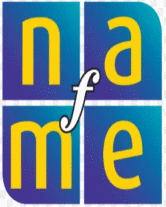Objectives
- Students will imitate rhythmic patterns created by the teacher or taken from the drum performance on "Oshossi," from Afro-Brazilian Religious Songs: Cantigas de Candomble/Candomble Songs from Salvador, Bahia (Lyrichord LLST 7315), using percussion instruments or by striking the body.
- Students will study and perform some of the layered and interlocking rhythms of the drum ensembles of Brazil, Haiti, Cuba, Suriname, and Venezuela using classroom percussion instruments.
- Students will combine three different rhythmic ostinatos written in TUBS (Time Unit BoxSystem) notation to produce a composite ensemble pattern.
- Students will improvise patterns in a small-group setting.
Materials
- Suggested recordings:
- Afro-Brazilian Religious Songs: Cantigas de Candomble/Candomble Songs from Salvador, Bahia (Lyrichord LLST 7315)
- Amazonia
- Cult Music of Northern Brazil (Lyrichord LLST 7300 or LYRCD 7300)
- Book: Sounds of the World: Music of Latin America: Mexico, Ecuador, Brazil (Reston,VA: Music Educators National Conference, 1987)
- Classroom drums, preferably bongos or congas, claves, triangles, sticks, tins, bottles, spoons, or other available percussion instruments
- Question and answer sheets (optional)
Procedures
- Play line A (the quarter-note pulse) of figure 12 from Rhythms and TUBS Notation for Hispanic Drumming on a drum. Have the class imitate it, using their bodies as instruments by tapping, clapping, clicking, or stamping.
- Play line B of figure 12 on a triangle. Ask the students to imitate it using bottles andspoons while saying the vocable "mm" on the rests.
- Play line C of figure 12 on the claves, and instruct the students to imitate it usingsticks. Students again say "mm" on the rests.
- Divide the class into three sections, assigning one section line A, the second section line B, and the third section line C. Begin with one section, and then add the othersections to form a layered texture.
- After the composite rhythm is successfully achieved, discuss the activity by askingstudents the following questions:
- Did we all perform the same rhythmic pattern after we divided the class?
- Did our different patterns fit together?
- How did we put them together?
- Time-line a steady rhythmic pattern that is repeated throughout a performance.It serves as a foundation or organizing principle for the entire rhythmic structure.It is usually played by idiophones such as the claves or cow bell and is sometimesplayed in a drum ensemble as a rhythmic ostinato. Sometimes more than one percussion instrument may be used to play the time-line.
- Ostinato a repeated rhythmic pattern that may be changed slightly during theperformance but never loses its basic form.
- Rhythmic layering the principle of creating a dense texture in which more thanone rhythmic pattern occurs simultaneously. If the parts enter at different points,the layering effect becomes more evident.
- Interlocking rhythms rhythms that fit together as they progress through time. Ifthe drums or instruments have various pitches or textures, the interlocking effectis easier to detect.
- Composite pattern the total rhythmic phrase that emerges as the drummers playostinatos and improvised patterns together.
- Is there more than one drum playing?
- Do you hear a steady pattern that you could imitate?
- Does the steady pattern ever change?
- What else do you hear? Do you hear voices, clapping, other instruments, or a foreign foreign language?
- Can you tell which instrument or instruments play the time-line?
- Can you guess what kind of occasion this music is being played for?
- Can you guess what country this music comes from?
National Standards for Arts Education Correlations
- Content Standard #2: Performing on instruments, alone and with others, a varied repertoire of music
- Content Standard #3: Improvising melodies, variations, and accompaniments
- Content Standard #6: Listening to, analyzing, and describing music
- Content Standard #9: Understanding music in relation to history and culture
Excerpted from Multicultural Perspectives in Music Education.

| Provided in partnership with NAfME |
Use a music lesson that helps students understand drum rhythms, performing as a group, and improvising melodies from Brazil, Haiti, Cuba, Suriname, and Venezuela.
Subjects
Holidays
TYPE:




